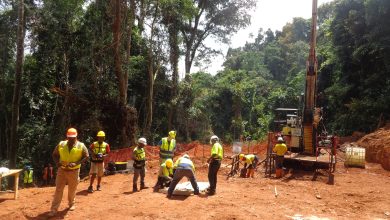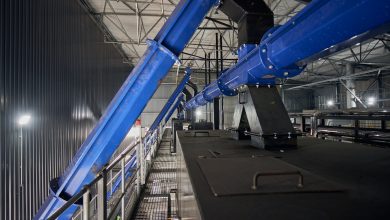
“Stormwater analysis is also vital in establishing the water balance for any mining operation as it helps in understanding and managing the runoff from rainfall – which consolidates the volumes of water available and the respective uses.”
With South Africa experiencing numerous devastating flood events in recent years, this has placed a spotlight on the challenges inherent in minimising flooding – by undertaking accurate stormwater analysis and using this analysis to place infrastructure away from vulnerable flooding areas.
One of the key aspects of placing infrastructure is guided by estimating the flood levels and modelling where flood levels through hydrological and hydraulic modelling of stormwater volumes and flows, according to hydrologist Charmaine Thulo, a member of SRK Consulting’s water team. A fundamental objective is to manage the risk to life and property, but there are also stringent water regulations which must be observed.
“Regulation GN704 of the Water Act requires that clean water runoff that is not contaminated by mine infrastructure be separated from runoff water that comes into contact with mine infrastructure.” said Thulo.
Sizing facilities
The analysis of stormwater patterns is therefore the subject of specialised computer modelling, to simulate storage in pollution control dams as well as assisting the sizing of drainage channels and pipes. This modelling helps minimise discharge from the pollution control dams. Such models utilise detailed rainfall data from one or more sources, to establish baselines and predictions for 1-in-50-year or 1-in-100-year floodlines.
“At the same time, many clients such as mines are looking for ways to reduce their reliance on external water resources like municipalities,” she explained. “This can include finding ways to store more water for their own use, while still managing the risk of excessive stormwater inflows which could exceed the capacity of their pollution control dams.”
Rainfall more variable
She highlights that historic rainfall data has been the traditional benchmark for stormwater analysis, as it has in the past provided a reliable basis for what to expect in the future. However, climate change has already started to lead to more variable rainfall patterns – making it more difficult to make accurate predictions.
“Our modelling of stormwater now has to take this into account, as there could be significant variations going forward which demand adjustments to the designs and specifications of water infrastructure,” she said.
For mining companies with tailings storage facilities (TSFs), for example, there are also recent standards which require stricter compliance. The Global Industry Standard on Tailings Management (GISTM) focuses on climate change adaptation and explicitly demands that signatories recognise climate change factors and build these into their designs – to ensure that TSFs remain stable and safe for their long life spans and to reduce the risk of environmental impacts.
Reviewing drainage
“These concerns have led to some clients asking us to review the capacity of their TSF penstocks, decant pipes and water channels,” said Thulo. “This is an important consideration as rainfall is a key factor in the stability of structures such as tailings dams, and drainage capacity must keep up with the volumes of rainwater being retained on the surface.”
Stormwater analysis is also vital in establishing the water balance for any mining operation as it helps in understanding and managing the runoff from rainfall – which consolidates the volumes of water available and the respective uses. Such an exercise helps identify water sources and allows for efficient allocation to its facilities including plants, tailings and return water storage dams. These calculations, which must ensure operational efficiency and environmental compliance, must now also deal with the uncertainties associated with climate change, she concluded.






